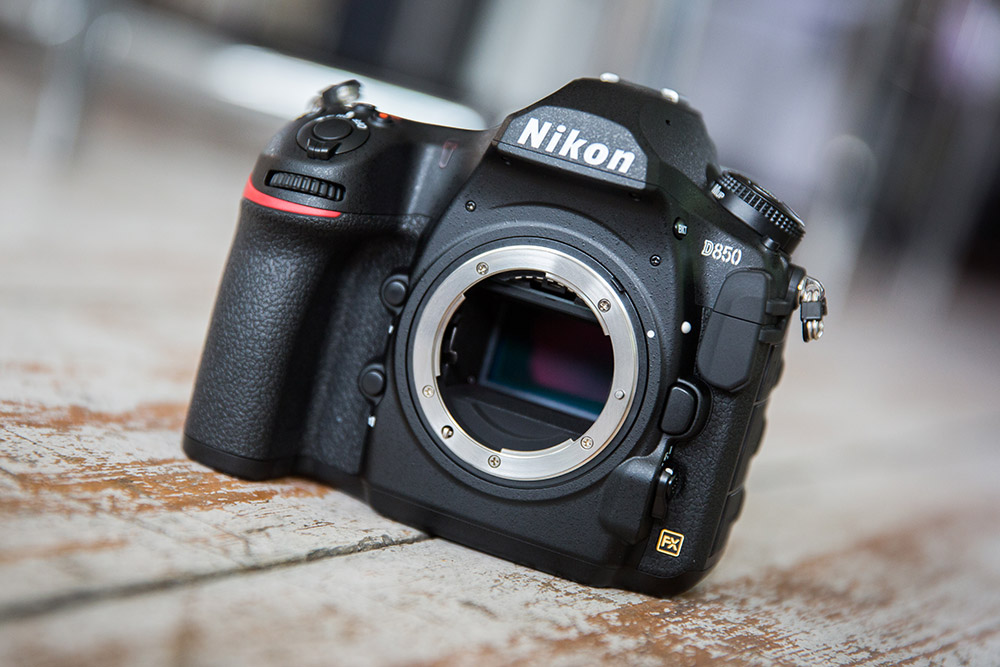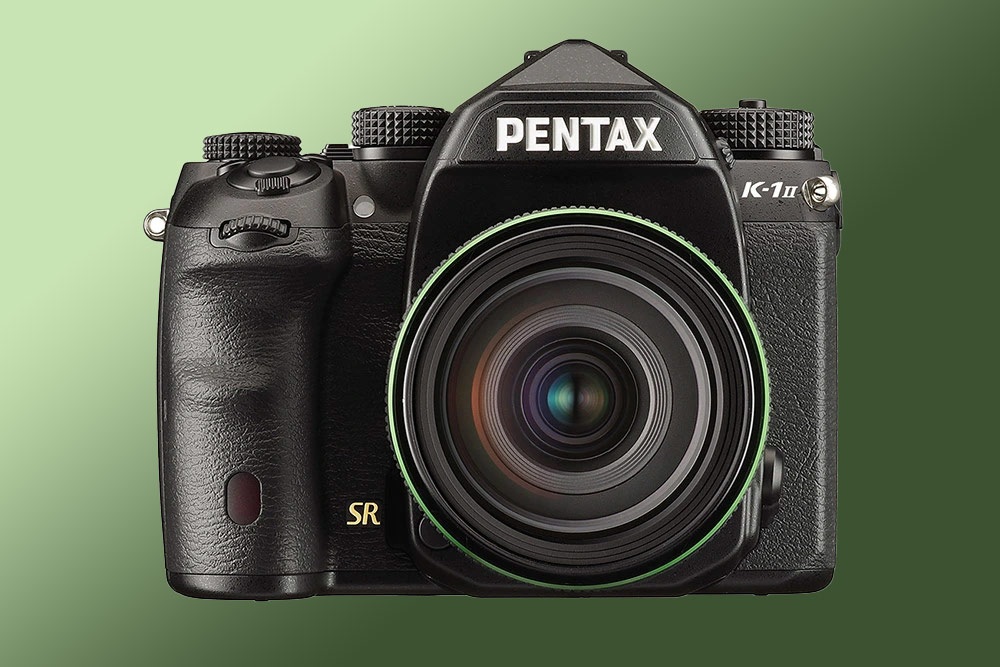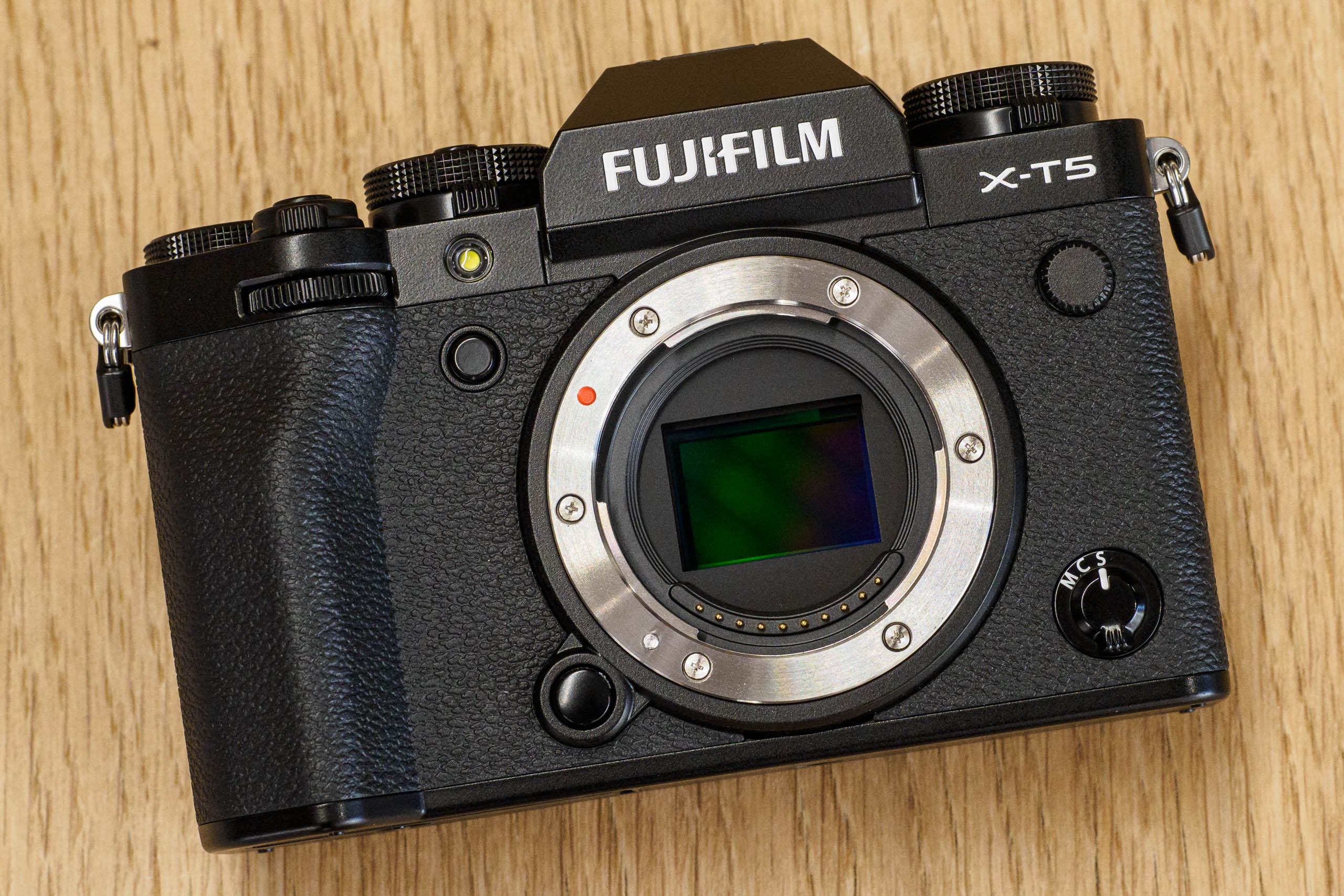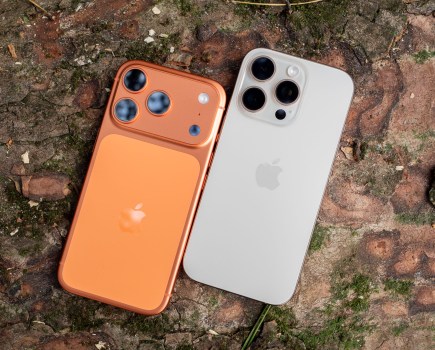Welcome to our comprehensive guide to the best cameras for landscape photography. One of the most popular genres of shooting, landscape photography is inspiring, addictive and challenging in equal measure. Its technical demands are different from capturing moving targets like wildlife or sports. Any experienced landscape shooter knows, though, how ephemeral the light can be for the perfect composition in that moment when the elements come together. There’s nothing quite like it.
At AP, we test and review every major camera that is released, and shooting landscapes is a big part of our testing procedure. As such, we’ve compiled this list based on our own direct experience with the cameras featured. They aren’t all new releases either – we only recommend cameras we feel are worth the money, which include plenty of fantastic older models available at great prices second-hand.
Please note that prices quoted are snapshots from available models at the time of publishing and, as such, are always subject to change – especially true in the used camera market.
To learn more about our selection criteria, scroll to the bottom of the page for our full explainer of which features are most important for a landscape photography camera. We’ve split our list into different camera types, like DSLRs, mirrorless cameras, medium format and compacts. Read on to see our picks and why we made them – and also check out our guide to the best lenses for landscapes.
The best cameras for landscape photography: our quick list
Looking for the best deal on cameras for landscape photography? Not only will you find the best landscape cameras, but also some of the best deals, as our ‘Buy now’ buttons are setup to automatically take you to the best prices from trusted retailers. You’ll also find a list of other retailers below each camera, so you can find the right deal for you.
Best DSLRs for landscapes:
- Best budget/beginner: Nikon D3500 – check best price
- Best Canon: Canon EOS 90D – check best price
- Best Nikon: Nikon D850 – check best price
- Best Pentax: Pentax K-1 II – check best price
- Best second-hand: Nikon D5600 – check best price
Best mirrorless cameras for landscapes:
- Best for £1000 / $1000: Fujifilm X-S10 – check best price
- Best Nikon: Nikon Z7 II – check best price
- Best Panasonic: Panasonic Lumix S1R – check best price
- Best Canon: Canon EOS R5 – check best price
- Best Sony: Sony A7R V – check best price
- Best for hiking: OM System Olympus OM-1 – check best price
- Best APS-C: Fujifilm X-T5 – check best price
Best medium format cameras for landscapes:
- Best medium format: Fujifilm GFX100 II – check best price
- Best budget medium format: Fujifilm GFX50S II – check best price
Best compact cameras for landscapes:
- Best overall: Canon PowerShot G1 X Mark III – check best price
Why you can trust Amateur Photographer
We spend many hours testing every product we recommend, in detail, in a variety of situations and shooting scenarios, and only use experts for our reviews, so you can be sure that you’re getting the best products. Find out more about our expert writers.
Best DSLRs for landscape photography
DSLRs have been used to shoot terrific landscape images for many years now, and will continue to be used for plenty more. While mirrorless cameras are where the latest developments are happening, DSLRs continue to offer terrific value for money, and for some, an unbeatable handling experience. Many photographers simply prefer to compose with an optical viewfinder, while others appreciate the size and heft of top-end DSLRs. We’ve included options here from right the way across the price spectrum, including budget beginner DSLRs, enthusiast models and professional cameras.
Best budget camera for landscapes: Nikon D3500

Amateur Photographer verdict
Sharp results with comfortable handling and excellent battery life, this is a great starting point for landscape photography- Great images for the price
- Useful beginner modes
- Excellent battery life
- No weather sealing
At a glance:
- 24.2MP APS-C CMOS sensor
- ISO100-25,600
- FullHD video (60fps)
- 1550 shot battery life
- Price: $475 with 18-55mm VR lens / £380 body only
The Nikon D3500 features a 24.2MP APS-C CMOS sensor, with no optical low-pass filter, which means it’s designed to give as much detail as possible. Active D-Lighting helps with dynamic range in JPEG images, and the camera has traditional DSLR handling, making it a comfortable camera to use. You’ll also find incredible battery life, being CIPA rated to up to 1550 shots per charge. These estimates tend to be conservative, though bear in mind that battery life can also be affected by environmental factors like cold weather.
The 18-55mm kit lens that this camera was bundled with when sold new can give sharp results and is a great starting point, but it’s likely you’ll want to have a look at something else. We’d suggest the AF-P DX-Nikkor 10-20mm f/4.5-5.6G VR lens ($307 / £309), as it provides a wider angle of view that’s more suited to landscape shooting.
Read our full Nikon D3500 review.
Best Canon DSLR for landscape photography: Canon EOS 90D
Amateur Photographer verdict
The Canon EOS 90D handles well, and has excellent weather-sealing and battery life – all with Canon’s esteemed colour reproduction and detail- Great resolution for APS-C
- Comprehensive weather sealing
- High-stamina battery
- Single card slot
At a glance:
- 32MP APS-C CMOS sensor
- Canon EF-S lens support
- 1300-shot battery life
- 3inch vari-angle touchscreen
- $1,000 / around £860 used, body only
The Canon EOS 90D offers a high-resolution APS-C sensor and gives you Canon’s great colour reproduction, and high levels of detail. It also offers an impressive battery life of 1300 shots. It handles well, it’s not too heavy, and it has been extensively weather sealed to protect the internal parts from a sudden downpour.
There is a good range of ultra-wide-angle Canon EF-S lenses, with the Canon EF-S 10-18mm f/4.5-5.6 IS STM being a great value budget choice at £249 (16-29mm equivalent). For those with more cash, there’s a 10-22mm available (£529, 16-35mm equivalent), or for those who want wide-angle and zoom, there is a 15-85mm IS USM lens available (£779, 24-136mm equivalent).
Read our Canon EOS 90D review for the full lowdown on what we thought of this camera.
Best Nikon DSLR for landscape photography: Nikon D850
Amateur Photographer verdict
The Nikon D850 gives maximum detail in low-light conditions, with great handling for a larger camera and impressive battery life- Superb resolving power
- Built for the outdoors
- Broad ISO range
- Still quite expensive
At a glance:
- 45.7MP Full-frame BSI CMOS sensor
- Low base ISO speed of ISO64
- 4K video, 8K time-lapse support
- 1840 shot battery life
- Weather-sealed
- $2,397 / £2,399 body only
The Nikon D850 is a high-resolution full-frame DSLR with a 45.7MP sensor that is capable of producing images with high levels of detail, thanks in part to the lack of a low-pass filter. The camera also benefits from an ISO range that starts at ISO64, which is usefully lower than many cameras. This allows you to maximise detail in images when there’s enough light.
For some, the handling of a DSLR will be of great importance, and for these people, the Nikon D850 certainly delivers great ergonomics, particularly if you’re a fan of larger cameras. You’ll also benefit from impressive battery life, with up to 1840 shots possible from one battery.
There’s a range of lenses including the Nikon 16-35mm F4 G AF-S VR lens at £1,149, or you could look at these wide-angle prime lenses: Nikon 20mm F1.8G AF-S (£799) or the Nikon 24mm F1.8G AF-S (£749).
See our full Nikon D850 review.
Best Pentax camera for landscape photography: Pentax K-1 II
Amateur Photographer verdict
The K-1 II boasts the Pentax build quality alongside robust weather-sealing and the added bonus of the K-mount for an extensive range of lenses- Very good weather sealing
- Rich lens catalogue
- Lacks feature range of Canon/Nikon
At a glance:
- 36MP full-frame CMOS sensor
- Weather-sealed
- Innovative tilting screen
- Wide range of K-mount lenses
- In-body image stabilisation
- $1,797 / £1,549 body only
The Pentax K-1 II, and the original Pentax K-1, both offer a 36MP full-frame CMOS sensor, along with Pentax’s excellent build quality and ergonomics. The camera is weather-sealed and features an optical viewfinder and tilting screen on the back. Using the Pentax K-mount you can use a vast range of lenses, dating back to 1975.
Speaking of lenses, there are a number of comparatively new full-frame lenses from Pentax, including the Pentax-D FA HD 24-70mm f2.8 ED SDM WR ($1,197 / £1,179). Care needs to be taken when choosing a lens, as many of Pentax’s lenses are designed for Pentax APS-C DSLRs. There’s also support from third parties, including Samyang, and Irix, who offer a number of different ultra-wide-angle lenses, although it’s worth noting that the majority of these are manual focus only.
Best second-hand landscape camera for beginners: Nikon D5600
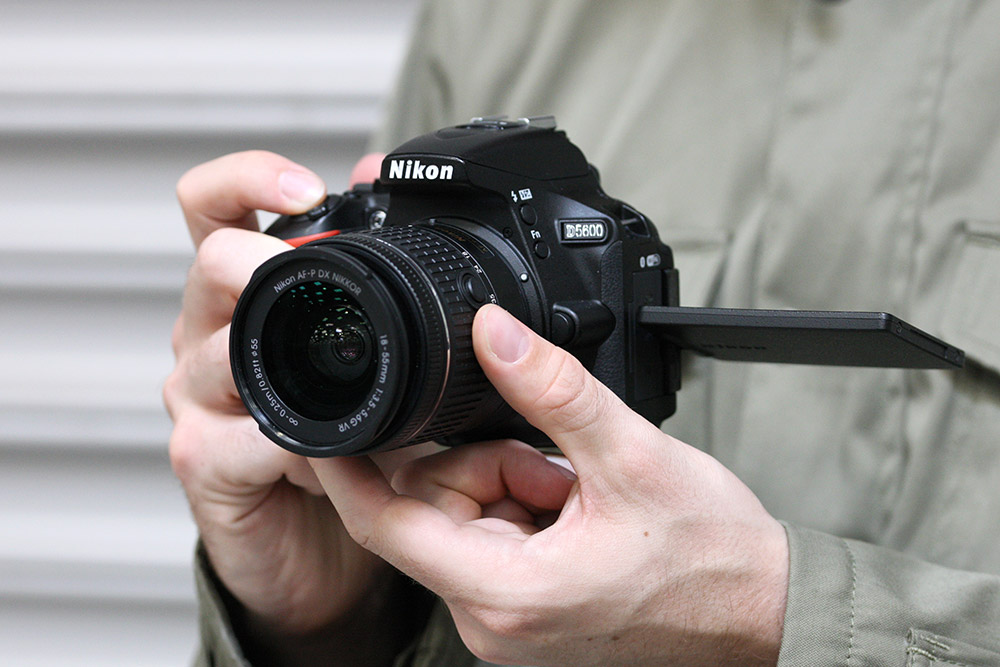
Amateur Photographer verdict
The Nikon D5600 gives you the renowned colour and detail of Nikon and the ability to use a vast array of lenses- Great ultra-wide lens selection
- Gorgeous image colour and detail
- JPEGs can be a touch dark
At a glance:
- 24.2MP APS-C sensor
- ISO100-25,600
- 3.2inch 1.4m-dot full articulated touchscreen
- 820-shot battery life
- approx. $700 / £440 body only
The Nikon D5600 offers a 24.2MP APS-C CMOS sensor, and Nikon’s excellent colour management gives images with warm, saturated colour and plenty of detail. There may only be Full HD video, but if you don’t need 4K (and as a landscape photographer you probably don’t) then the camera gives everything else you need, including access to some great APS-C (DX) lenses.
Ultra-wide-angle lenses include the AF-P DX-Nikkor 10-20mm f/4.5-5.6G VR lens (£309), which gives a 15-30mm equivalent ultra-wide-angle zoom, as well as the Nikon 10-24mm f/3.5-4.5 G AF-S DX lens (£949). If the Nikon lenses available don’t take your fancy, then there are also lots of lens choices from Sigma, Samyang, Tamron and others.
Check second-hand dealers for used options if you’re looking for a better deal, as this camera has been discontinued.
Read our full Nikon D5600 review.
Best mirrorless cameras for landscape photography
There are absolutely loads of fantastic mirrorless cameras for landscape shooting – to the point where we could easily have filled this whole guide with just mirrorless suggestions. With options across the price spectrum, we’ve aimed to provide a broad swathe of mirrorless cameras that’ll produce great options. So while you’ll find the ultra-high-resolution full-frame mirrorless cameras on this list, you’ll also find more affordable models that make for great beginner and intermediate options.
Best camera for landscapes under £1000 / $1000: Fujifilm X-S10

Amateur Photographer verdict
A great-handling, easy-to-use camera with sharp images and rich colour alongside built-in image stabilisation and 4K video- Top-notch JPEG and RAW quality
- Great scope for customisation
- Film Simulations modes
- Recent stock issues
- No weather sealing
At a glance:
- 26MP APS-C CMOS sensor
- In-body image stabilisation
- PASM mode dial
- 4K video
- from approx. $1,700 with XF18-55mml ens kit / £720 body only
The Fujifilm X-S10 is a great-handling mirrorless camera, with a large hand-grip, DSLR-like controls, and a PASM mode dial, making it easy to use. It also benefits from the same excellent 26MP APS-C X-Trans CMOS sensor as Fujifilm’s X-T4 model, giving you images with plenty of detail and Fujifilm colour. In-body image stabilisation is built-in, and it offers 4K video.
The downside to this model, compared to the X-T4, is the lack of weather-sealing on the X-S10. The X-S10 uses X-mount lenses and there are a number of options available, although perhaps not as many budget lenses as you’d find with other cameras. It’s also worth noting that the X-S10 has, like a lot of cameras, been hit with stock issues lately, so availability may come and go.
Fujifilm has since announced a successor to this camera, the Fujifilm X-S20. These two cameras offer the same resolution – the improvements to the X-S20 are mostly concerned with its processing speed and video capabilities. Since the X-S10 is the more affordable choice (and keeps within our $1,000/£1,000 budget for this entry), we’re sticking with it as our pick for the time being – especially since Fujifilm still didn’t add weather-sealing to the X-S20.
Find out more about this camera in our Fujifilm X-S10 review.
Best Nikon mirrorless camera for landscape photography: Nikon Z7 II
Amateur Photographer verdict
Exceptional image quality and focus with the benefit of Nikon’s -mount lens series- Dual card slots
- Top class handling
- Expensive lenses
- Viewfinder resolution is average
At a glance:
- 45.7MP full-frame BSI CMOS sensor
- ISO64-ISO25,600 (standard)
- In-body image stabilisation
- Weather-sealed
- $1,997 / £2,499 body only
The Nikon Z7 II is one of the second generation full-frame mirrorless cameras from Nikon and offers an impressive 45.7MP full-frame BSI CMOS sensor, along with Nikon’s Z-Mount series of lenses, which have all been developed specifically for the new mirrorless camera range. This means they give exceptional image quality in combination with Nikon’s excellent focus system.
There’s a growing range of lenses, but you’ll notice that many are at the more expensive end of the market, with ultra-wide-angle options being the 14-24mm f/2.8 S (£2,499), and another being the 14-30mm f/4 S (£1,349).
Read our full Nikon Z7 II review for more.
Best Panasonic camera for landscape photography: Panasonic Lumix S1R

Amateur Photographer verdict
High-resolution viewfinder and images with 187MP images on multi-shot and motion blur reduction ideal for landscape photography- Multi-shot 187MP mode
- Excellent lens range
- Very good stabilisation
- Big, hefty body
At a glance:
- 47MP full-frame sensor
- ISO100 to ISO25,600 (standard)
- In-body image stabilisation
- High-res multi-shot mode (187MP)
- Weather-sealed
- $4,598 with 24-105mm lens / £2,500 body only
The Panasonic Lumix S1R offers a high-resolution 47MP full-frame CMOS sensor, along with a high-resolution electronic viewfinder, 4K video recording, and in-body image stabilisation. There’s a multi-shot high-resolution mode that can produce 187MP images, and the camera has a mode to reduce motion blur so that it can be used for landscape photography. Despite being a mirrorless camera, the S1R is quite weighty and large.
As the Lumix S cameras are part of the L-Mount alliance, there is a wide range of lenses, available from Panasonic, Sigma, and Leica. Options include the Sigma 14-24mm F2.8, Panasonic Lumix S Pro 16-35mm F4, Leica 16-35mm F3.5-4.5, and Panasonic Lumix S 20-60mm F3.5-5.6, to name a few ultra-wide zoom lens options. There are also a range of ultra-wide-angle prime lenses available.
Read our Panasonic Lumix S1R review.
Best Canon camera for landscape photography: Canon EOS R5
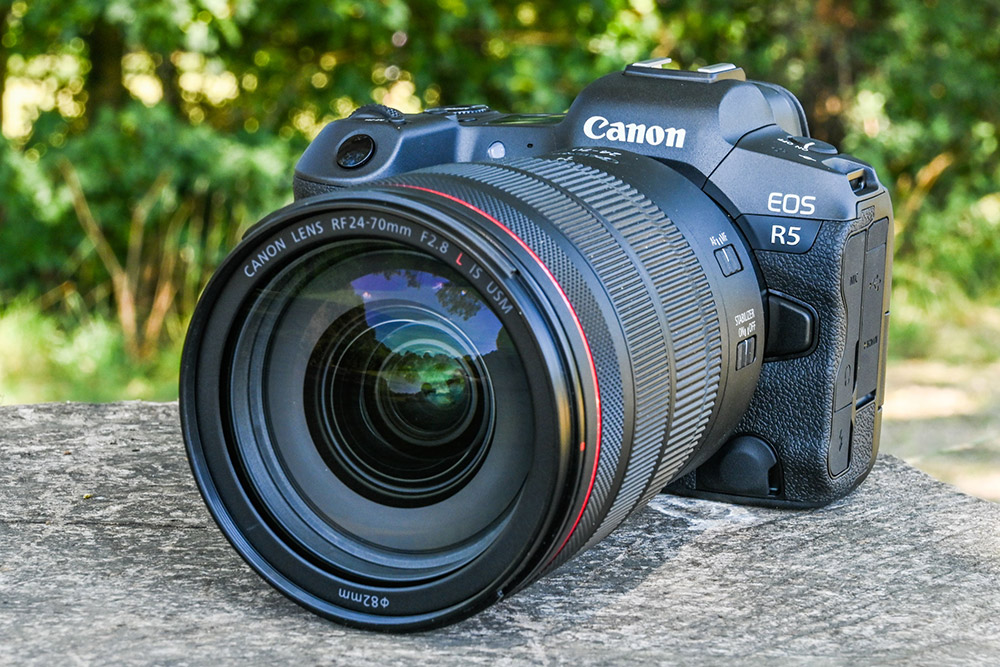
Amateur Photographer verdict
A premium full-frame mirrorless camera with 8K and 4K video and excellent sensor, viewfinder and touchscreen for shot composure- Class-leading LCD and EVF
- Superior image quality
- Short battery life
At a glance:
- 45MP full-frame sensor
- Sensor-shift IS
- ISO100 to ISO51,200 (standard)
- 8K/4K video recording
- Weather-sealed
- $2,999 / £3,149 body only
The Canon EOS R5 is one of Canon’s premium full-frame mirrorless cameras, offering a 45MP full-frame CMOS sensor, as well as in-body image stabilisation that works with any lens. There’s a high-resolution 5.76m-dot electronic viewfinder (EVF), and a 3.2inch fully articulated touchscreen with 2.1m dots. This makes framing and composing shots a real pleasure when using the camera. A top LCD display also lets you see camera settings at a glance.
The camera offers advanced video modes, including 8K (30fps) and 4K (120fps) video recording. However, you need some quite impressive hardware to edit this, and also to be aware that the camera does have some limitations due to over-heating while recording. There’s also a relatively short battery life to be aware of, with 490 shots on offer when using the LCD, or a much shorter 320 shots when using the EVF.
If stills are your primary aim, then you don’t need to worry so much about video recording and overheating, and there is a growing range of Canon RF lenses available, with ultra-wide-angle lens options, including the RF 14-35mm F4L IS USM, and RF 15-35mm F2.8L IS USM, plus the “standard” 24-70mm f2.8L IS USM). If you’re on a budget, there’s a compact RF 16mm f2.8 lens.
Read our full Canon EOS R5 review.
Nb. If you’re looking for a similar resolution in a DSLR, an option could be the Canon EOS 5DS R (50MP), which has been discontinued but is still available second-hand.
Best Sony camera for landscape photography: Sony Alpha A7R V
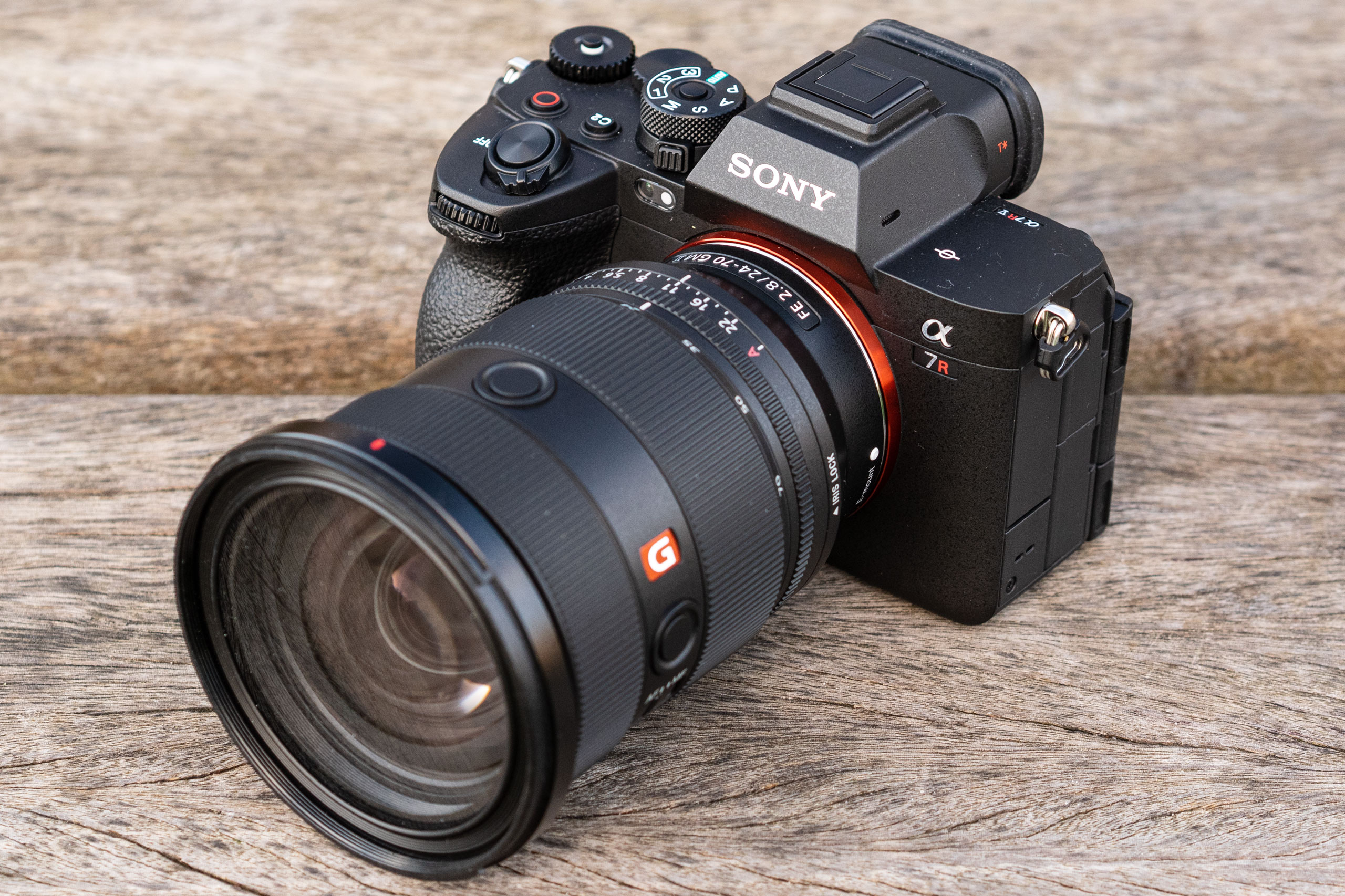
Amateur Photographer verdict
Upgraded with subject-detection autofocus and a new AI processing unit, in addition to an excellent viewfinder and versatile screen- Superb image quality from proven 61MP sensor
- Ultra-reliable subject detection autofocus
- Vast, complex, challenging menus
- No in-camera raw conversion
At a glance:
- 61MP full-frame sensor
- ISO100-32,000 (expands to ISO50)
- 693-point AF with subject recognition
- 9.44m-dot, 0.9x OLED viewfinder (EVF)
- 3.2in, 2.1m-dot 4-way-articulated LCD
- $3,900 / £3,489 body only
The Sony Alpha A7R V features the same sensor and core imaging specs as its predecessor, the well-regarded Sony Alpha A7R IV, but almost everything else has been updated and improved. Key improvements include an enhanced subject-detection autofocus system that’s capable of recognising a wider range of subjects, powered by a new AI processing unit – so you can capture a wide range of subjects as well as static landscapes (fast-moving birds and animals, for instance).
The improved viewing experience will also come as good news to landscape photographers out in the field. The A7R V inherits the huge and detailed electronic viewfinder previously used by Alpha 7S III and Alpha 1. This is complemented by a new, much more versatile screen design, which combines an up/down tilting mechanism with a fully articulating side hinge.
The in-body image stabilisation has been uprated too – it now delivers up to 8 stops of shake reduction in CIPA standard tests, compared to 5.5 stops on the older model. Again, very useful for longer landscape exposures if you don’t have a tripod with you.
Sony has been making full-frame E-Mount cameras since 2013, so as you’d expect, there’s a vast array of lenses available, with high-quality options available from Sony, as well as a number of other options from Sigma, Zeiss, Tamron, Tokina and others. You can choose from a number of ultra-wide-angle zoom lenses, such as the Sony FE 16-35mm F4 ZA OSS, or the newer more compact FE PZ 16-35mm F4 as well as many prime lens options.
Read our Sony Alpha A7R V review.
Nb. A second-hand or value choice could be the Sony Alpha A7R III, with a 42MP sensor, it still offers high resolution, but is much more affordable. Prices will also be coming down on the Sony Alpha A7R IV.
Best landscape camera for hiking: OM System Olympus OM-1
Amateur Photographer verdict
The best weather-sealing of any current model and clevel features- Class-leading weather sealing
- Built-in Live ND filter
- 80MP high-res mode works handheld
- Built around small sensor
At a glance:
- 20MP Micro Four Thirds sensor
- Weather-sealed (IP53 rating*)
- In-body image stabilisation
- 5.76m dot electronic viewfinder (EVF)
- Compact body and lenses
- $2,200 used with lens / approx. £1,000 used, body only
The OM System Olympus OM-1 offers an impressive IP53 weather-sealed rating, when used with compatible lenses, giving this camera system some of the best weather-sealing of any current model. This feature, plus clever computational features, make this camera more suited to landscape photography than it may appear at first glance.
You’ll find Live-ND built-in (up to ND64), which lets you use a slower shutter speed, without the need to attach an ND filter to the lens. There’s also in-camera focus stacking, in-camera high-res multi-shot (50MP handheld, up to 80MP with a tripod), HDR, timelapse, plus live composite/bulb modes for low-light shooting, as well as Starry Sky AF. As with other high-res multi-shot modes, it’s best for static scenes, but there is a handheld mode, and we had success shooting outdoors with the camera.
As the camera is part of the Micro Four Thirds system, introduced in 2008 alongside Panasonic, there is perhaps the widest range of lenses available for any mirrorless system. Ultra-wide-angle lenses are available from both Olympus and Panasonic, with multiple zoom lens options, as well as primes. There are also third party lenses available from Sigma, Laowa, Tamron, Samyang, and many others. Have a look at some of the best Micro Four Thirds lenses.
Read our full OM-System OM-1 review to learn more about this clever camera.
Best APS-C camera for landscape photography: Fujifilm X-T5
Amateur Photographer verdict
Lightweight and boasting Fujifilm’s colour options for outstanding images straight out of the camera- Effective in-body stabilisation
- Robust weather-sealed construction
- Wide range of X-mount lenses
- Relatively compact
- Ineffective hi-res multi-shot mode
At a glance
- 40.2MP APS-C X-Trans CMOS 5HR sensor
- ISO 125 – 12,800 (standard); ISO 64 – 51,200 (extended)
- 5-axis in-body image stabilisation
- 3in, 1.84m-dot 3-way tilt LCD
- $1,700 / £1,449 body only
The Fujifilm X-T5 is a great choice for someone who wants a lightweight body for landscape photography. Its 40MP sensor produces high-resolution images from a relatively compact camera that can be used with a range of APS-C lenses. If you’re not keen on editing your images, Fujifilm’s colour options mean that you can take your images straight out of the camera and post them on social media (which also means you don’t always need to shoot RAW).
The range of X-mount lenses includes a large number of landscape-friendly options, and the general control and handling experience of using the X-T5 is just sublime. It’s weather-sealed, well-balanced, and more affordable than Fujifilm’s premium X-H2, which offers the same resolution.
Find out more in our full Fujifilm X-T5 review.
Best medium format cameras for landscape photography
Medium format, while more affordable and accessible than it used to be, is still a discipline that requires a significant cash investment. However, for some photographers, it’s simply non-negotiable. There simply isn’t any other way to get that glorious depth and detail provided by the larger sensor. We’ve included the medium format option we feel is best overall right now, as well as a more comparatively affordable choice for those who don’t have quite such a high budget.
Best landscape camera for maximum resolution: Fujifilm GFX100 II
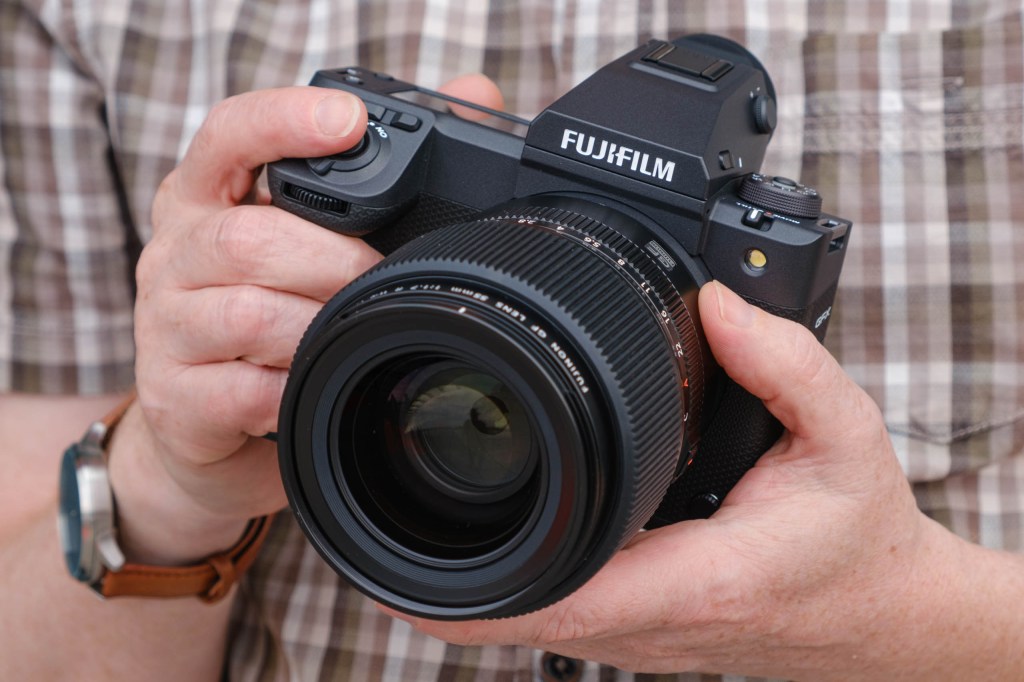
Amateur Photographer verdict
- Amazing image quality and resolution
- Relatively compact for medium format
- Highly expensive
At a glance:
- 102MP medium-format sensor
- In-body image stabilisation
- ISO40 to ISO102,400 (extended)
- Top display screen
- Weather-sealed
- $7,500 / £7,000 body-only
The latest model in Fujifilm’s spectacular GFX range of mirrorless medium format cameras, the Fujifilm GFX100 II delivers the best image quality from the series yet. Like the previous GFX100S, it sports a 102MP medium-format sensor that’s capable of capturing images of simply absurd levels of detail and dynamic range. If you’re interested in making large prints, the GFX100 II is one of the best cameras you can buy right now.
The handling is excellent too – while it’s undeniably a big camera, the GFX 100 II doesn’t feel radically different to use than a large full-frame model. Advances in processing technology mean it’s relatively snappy in operation, with decent phase-detection autofocus and effective eight-stop stabilisation. The GFX100 II really delivers astonishing image quality shot after shot. It’s expensive, sure, but it’s aimed at photographers who demand the absolute best.
There’s a range of GF mount lenses, and there’s a 0.79x crop factor, so the GF 23mm f4 ($2,599 / £2,399) lens is equivalent to 18mm (in 35mm terms), and the GF 30mm F3.5 ($1,699 / £1,649) is equivalent to 24mm. There’s also a GF 32-64mm F4 ($2,299 / £2,149), equivalent to 25-51mm, though the widest zoom lens is the GF 20-35mm F/4 R WR ($2,499 / £2,349), which produces an equivalent range of 16-28mm.
Read our full, in-depth Fujifilm GFX 100 II review.
Best budget medium format camera for landscapes: Fujifilm GFX50S II
Amateur Photographer verdict
- Effective in-body stabilisation
- High-res viewfinder
- Price competitive with full-frame
- System lenses are expensive
At a glance:
- 50MP medium-format sensor
- In-body image stabilisation
- ISO50-102,400 (extended)
- Top display screen
- Weather-sealed
- $5,000 / £2,380 (used) body only
In order to make the GFX system more affordable, the GFX50S II was introduced with a new budget lens, the GF 35-70mm F4.5-5.6 WR zoom lens (£849 lens only, or £3900 as GFX50S II kit with lens), which gives a 28-55mm equivalent.
Despite the lower price, it’s difficult to see where the camera is lacking, as the camera features a 51.4MP medium format sensor, in-body image stabilisation, a high-resolution electronic viewfinder (3.69m dots, 0.77x magnification), and a 3.2inch 2.35m dot tilting touchscreen. The price makes it competitive with high-resolution full-frame mirrorless cameras and really does make medium format an option.
However, one thing to be aware of is the price of wide-angle lenses. Most GF-mount lenses are more expensive than the 35-70mm lens designed for this camera model, particularly if you’re looking for a wide-angle lens, with the GF 30mm F3.5 equivalent to 24mm.
Read our Fujifilm GFX50S II review.
Best compact cameras for landscape photography
Finally, we’re rounding out our list with a compact camera that’s a great choice for landscapes. Normally, fixed-lens compacts don’t come up too often in landscape conversations, in part because they tend to have smaller sensors than interchangeable-lens cameras. However, as we’ll see, this isn’t always the case. If you simply want a self-contained camera/lens combination that’ll slip into a pocket and still capture great landscapes, this is the section for you…
Best compact camera for landscapes: Canon PowerShot G1 X Mark III

Amateur Photographer verdict
- Excellent image quality from APS-C sensor
- Slim, pocketable form
- SLR-style handling
- Rather limited zoom lens
- Battery life
At a glance:
- 24MP APS-C CMOS sensor
- 24-70mm equivalent lens
- ISO100 to ISO25,600
- Weather-sealed
- Compact camera
- $2,100 / £1,300 (excellent condition)
If you want something pocketable, and don’t want to change lenses, then the Canon Powershot G1 X Mark III is a great compact, with a 24MP APS-C CMOS sensor, and a 24-72mm equivalent zoom lens, an f/2.8-5.6 aperture, as well as optical image stabilisation. There are full manual controls as well as raw shooting, although battery life is quite short, so a spare battery is highly recommended. Despite the fact that the G1 X Mark III is a compact camera, you’ll find a built-in electronic viewfinder (EVF), plus a full-articulated 3-inch touchscreen.
It’s certainly expensive for a compact, and there’s an argument to be made that you could get more for your money by investing in a system camera. However, the Powershot G1 X Mark III stands head and shoulders above other compacts in terms of sheer image quality, and you will absolutely be able to shoot brilliant landscapes with it.
Find out more in our full Canon PowerShot G1 X Mark III review.
How to choose the best camera for landscape photography
Landscape photography is a particular discipline with particular demands, and it pays to get a camera with strengths to match. There are features you should be concerned with when choosing a landscape camera, and features you can afford not to worry about too much.
Resolution
Ultimate resolution is often the aim in landscape photography, as it means that images can be printed in large format. And if you are into travelling and hiking, then you may not want something so large and heavy, so we’ve highlighted some other options as well.
High-resolution sensors help you capture more detail and can let you crop into your image, but it’s also worth pointing out that a high-quality 20MP image can be printed up to 18×12 inches at 300 dpi, roughly A3. Be aware that a very high-resolution sensor will mercilessly reveal any flaws in your focussing or exposure technique, so sometimes, more is not always best.
Dynamic range and raw
Dynamic range is generally pushed to its limits when shooting landscape images, as you often have darker areas or shadows, along with a bright light in the scene, and you want to capture as much of this as possible. The human eye can normally cope with a much wider range than most cameras, so you’ll want to shoot raw or use other all available options to capture as much dynamic range as possible.
All of the cameras shown here shoot raw so you can process the images later when needed to get the best results. See our guide on how to maximise dynamic range.
ISO range
In landscape photography, you’re most likely going to want to use the lowest ISO speed possible*, in order to ensure your image is capturing as much fine detail as possible. There’s not a massive difference between using ISO100 and ISO200 on most cameras, however, some cameras have an even lower ISO speed, such as ISO50, which will allow a slower shutter speed when needed, helping you when you’re trying to capture blurred water, or blurred clouds etc.
*Be aware that some extended ISO speeds marked as “Low” or “L” will show a reduced dynamic range, and are best avoided. Sometimes, if you are shooting handheld in lower light, you might need to raise the ISO, and while it’s best to try and avoid noise, remember the old adage: better a slighter noisy shot than a soft one. The higher ISO performance of modern cameras has come on in leaps and bounds – see our recent guide to ISO.
Image stabilisation
Image stabilisation (IS) can help, and we’re at a point in time where it’s more common for new cameras to have in-body image stabilisation (IBIS) than not. Not only does this feature let you expand your ability to shoot at slower shutter speeds, but it also allows manufacturers to add multi-shot high-resolution modes to some cameras.
If you can afford a model with image stabilisation built-in, then this is worthwhile. It works with all lenses, letting you save money when buying a lens without IS built-in.
Weather-sealing
Weather sealing is likely to be a must-have, especially if you’re happy shooting in all weather conditions. You’ll also need to make sure the lens you use with the camera is weather-sealed, otherwise, you will have to find alternative methods of keeping your camera dry, which may not be as effective.
Lens choices
Lens range is another key factor to consider – are the lenses you want available for the camera you want to use? We run through some of the options available as we go through each camera. A wide-angle lens is an obvious choice for landscape, but sometimes it’s good to be able to zoom into the finer details too. A big trend in landscape photography at the moment is for more ‘intimate’ landscapes.
How we test cameras
We test cameras by taking photographs and video in a wide range of real-world situations. We evaluate their control layouts, handling, and the usability of their viewfinders and screens. We assess their autofocus across a range of different subjects and shooting scenarios and test a camera’s continuous shooting capacity.
We also examine the effectiveness of image stabilisation systems. Last but not least, we critically evaluate the image quality in both JPEG and raw, including resolution, high-ISO noise, and dynamic range. For our final conclusion and score, we take all these factors into account, along with portability and lens systems. You’ll find the full breakdown of how each camera has performed in our full reviews.
Further reading…
Starting out in landscape photography? Have a look at our beginner’s guide to landscape photography. For some inspiration, we also have the best landscape photographs, as well as landscape photography books.



